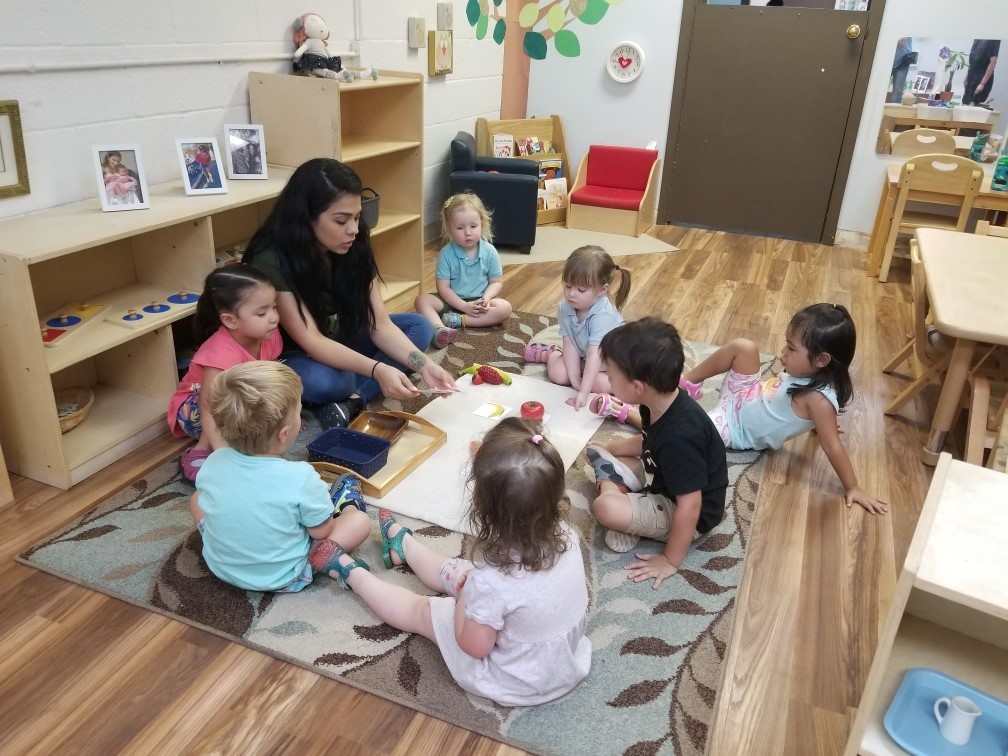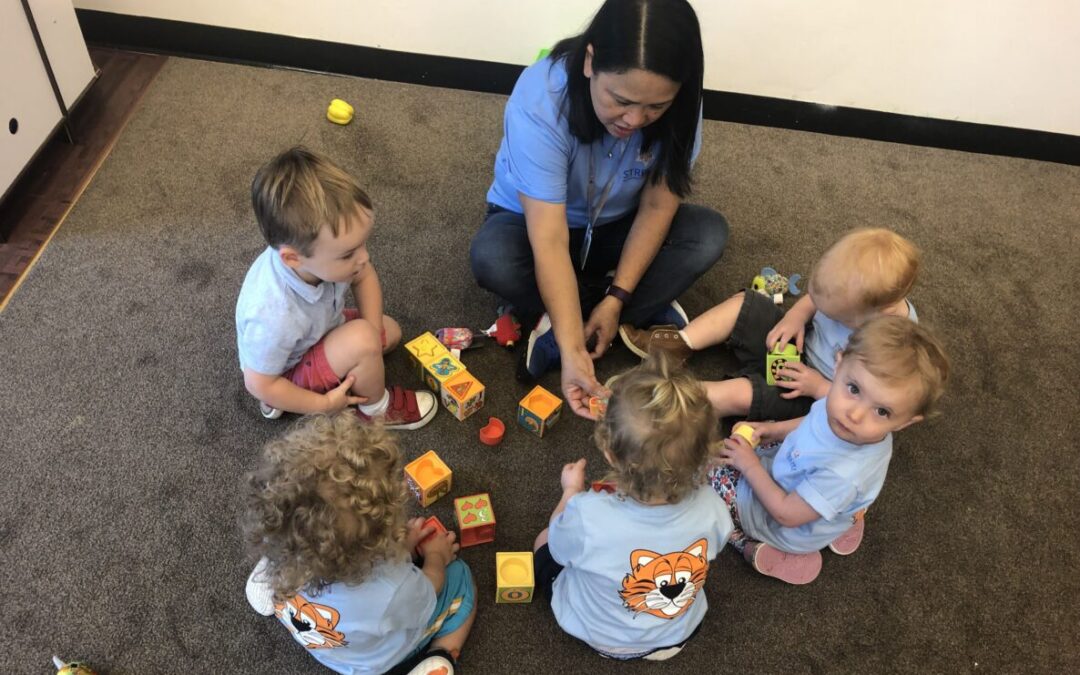Selecting the right infant daycare shapes your child’s early development, social skills, and emotional well-being. You’re making a decision that impacts your little one’s crucial formative years – a choice that deserves careful consideration and research.
Parents often feel overwhelmed when evaluating daycare options. You’ll need to weigh multiple factors:
- Safety and security measures in place at the facility
- Staff qualifications and experience with infants
- Learning environment and daily activities
- Location and operating hours
- Cost and payment structure
Your child deserves a nurturing space where they can thrive while you’re at work. This guide walks you through essential considerations for choosing an infant daycare that aligns with your family’s needs. You’ll discover key quality indicators, licensing requirements, and practical tips for facility visits – empowering you to make an informed decision about your child’s care.
Understanding Different Types of Childcare
Parents have three main options when it comes to choosing childcare for their infants:
Child Care Centers
These are licensed facilities that provide structured environments for children. Here are some key features of child care centers:
- They have multiple classrooms divided by age groups.
- They typically have larger spaces with 12 or more children per room.
- The staff members are professionals with formal training.
- There are set schedules and educational programs in place.
- The standard ratio is 1 caregiver for every 4 infants.
Family Day Care Homes
Family day care homes offer care in a caregiver’s private residence. Here are some important aspects of this type of childcare:
- The groups are smaller, consisting of 4 to 6 children.
- Mixed age groups are often present in one space.
- Schedules are more flexible compared to other options.
- The environment is home-like, providing comfort and familiarity.
- The standard ratio is 1 caregiver for every 3 to 4 children.
Group Homes
Group homes are a combination of childcare centers and family daycare homes. Here are the characteristics that define group homes:
- They provide care for 7 to 12 children.
- Usually, there are 2 to 3 caregivers present to ensure proper supervision.
- The environment is semi-structured, allowing for both planned activities and free play.
- Group homes are often located in residential settings, making them feel more like home.
- The standard ratio is 1 caregiver for every 5 to 6 children.
Each type of childcare setting has its advantages based on your specific needs:
- If you prefer a structured learning environment with trained staff, childcare centers may be the best choice for you.
- For those seeking intimate and flexible care settings, family daycare homes can provide a nurturing atmosphere tailored to your child’s requirements.
- Group homes strike a balance between structure and familiarity by offering professional standards within a home-like atmosphere.
When making your decision, consider factors such as your child’s temperament, your schedule requirements, and the type of learning environment you prefer. For instance, if you have a shy child who thrives in quieter settings, enrolling them in a family day care home might be beneficial. On the other hand, if you have an outgoing child who enjoys socializing with peers, opting for a childcare center could provide valuable opportunities for interaction and development.

Quality Indicators in Daycare Facilities
Quality daycare facilities share specific characteristics that directly impact your child’s development and well-being. Here’s what you need to look for:
Child-to-Staff Ratios
- Infant care (0-12 months): 1 caregiver per 3-4 babies
- Toddlers (12-24 months): 1 caregiver per 4-6 children
- Two-year-olds: 1 caregiver per 6-8 children
Lower ratios allow caregivers to provide individualized attention, respond promptly to each child’s needs, and create meaningful learning experiences.
Staff Qualifications and Training
- Early childhood education degrees or certifications
- Regular professional development workshops
- First aid and CPR certification
- Background checks and clearances
Learning Environment
- Age-appropriate toys and materials
- Designated spaces for different activities
- Clean, organized, and well-maintained facilities
- Child-sized furniture and equipment
Daily Structure
- Balanced schedule of activities
- Dedicated time for:
- Physical activity
- Rest periods
- Educational activities
- Social interaction
- Meals and snacks
Quality facilities maintain detailed records of each child’s development, share regular updates with parents, and implement research-based early learning curricula. Staff members create positive interactions with children through responsive caregiving, engaging activities, and consistent communication patterns.
Licensing and Accreditation: Ensuring Safety and Standards
Licensed daycare facilities must meet strict regulatory requirements designed to protect your child’s well-being. These requirements include:
- Maintaining appropriate staff-to-child ratios
- Regular health and safety inspections
- Background checks for all employees
- Safe building infrastructure
- Proper sanitation protocols
State licensing agencies conduct regular inspections to verify compliance with safety standards. You can request to see a facility’s current license and inspection reports – reputable centers will readily provide this information.
Key licensing standards typically cover:
- Building safety requirements
- Staff qualifications
- Health and hygiene protocols
- Emergency procedures
- Educational programming guidelines
Beyond basic licensing, many quality daycare centers pursue additional accreditation from recognized organizations. These voluntary certifications demonstrate a commitment to exceeding minimum standards.
Accreditation benefits include:
- Enhanced staff training requirements
- Stricter educational guidelines
- Regular quality assessments
- Documented commitment to continuous improvement
You can verify a facility’s licensing status through your state’s childcare licensing database. Ask potential providers about their specific licenses, accreditations, and how they maintain compliance with state regulations.
A licensed and accredited facility provides peace of mind that your child’s care environment meets established safety and quality benchmarks. These credentials serve as important indicators of a daycare’s commitment to professional standards and best practices.
Cost Considerations in Choosing Infant Daycare
Daycare costs vary significantly across different locations and care types. Here’s what you need to know about budgeting for infant daycare:
Location-Based Price Variations
- Urban centers typically charge higher rates due to increased operational costs
- Suburban facilities often offer more competitive pricing
- Home-based daycares usually provide lower-cost options
Type of Care and Associated Costs
- Traditional daycare centers: $800-$1,500 monthly
- Montessori programs: $1,000-$2,000 monthly
- Home-based care: $600-$1,000 monthly
Understanding Fee Inclusions
- Basic care hours
- Meals and snacks
- Educational materials
- Diapers and wipes
- Special activities or field trips
- Extended hours or late pickup fees
Hidden Costs to Consider
- Registration fees
- Supply fees (quarterly or annually)
- Security deposits
- Insurance costs
- Holiday or vacation policies
You’ll need to request a detailed breakdown of all costs from each facility you’re considering. Ask about payment schedules, late payment policies, and whether the facility offers sibling discounts or flexible payment plans. Some facilities might require you to provide certain supplies, impacting your total monthly expenses.
Many daycare centers offer various payment structures – weekly, bi-weekly, or monthly. Understanding these options helps you align childcare expenses with your household budget and income schedule.
5. Facility Visits: What to Look For During Assessments
Scheduling an in-person visit to potential daycare facilities gives you invaluable insights that websites and phone calls can’t provide. You’ll want to observe the facility during regular operating hours to see real interactions and daily routines.
Essential Elements to Assess During Your Visit:
- Physical Environment: Look for clean, well-maintained spaces with age-appropriate toys and learning materials. Check if there are secure entry systems, childproof features, adequate outdoor play areas, and proper sanitation stations.
- Staff Behavior and Interactions: Pay attention to how staff communicate with children. Are they warm and engaging? Observe if there is active supervision, professional appearance, consistent handling of behavioral issues, and clear communication with parents.
- Daily Operations: Take note of the structured daily schedules, healthy meal preparation areas, designated spaces for napping, clear sign-in/sign-out procedures, and visible emergency protocols.
Pro Tip: Create a personalized assessment checklist before your visit. Take notes and photos (if permitted) to compare different facilities later.
You’ll benefit from visiting each facility multiple times at different hours. Morning drop-offs and afternoon pick-ups offer distinct perspectives on how the facility manages transitions and maintains quality care throughout the day.
Consider bringing your child along for one visit to observe their comfort level with the environment and staff. Their reaction can provide valuable input for your decision-making process.
Parent Involvement in the Daycare Experience: Finding the Right Balance
Your role as a parent doesn’t end at drop-off. Active parent involvement creates a bridge between home and daycare life, contributing significantly to your child’s development and well-being.
Key Areas for Parent Participation:
- Daily Communication: Ask about established channels for updates – apps, daily reports, or face-to-face conversations
- Parent-Teacher Meetings: Regularly scheduled discussions about your child’s progress
- Special Events: Participation in celebrations, cultural activities, or educational programs
- Feedback Opportunities: Channels for sharing concerns or suggestions with staff
Setting Realistic Expectations
Different daycare facilities offer varying levels of parent involvement opportunities. You’ll need to identify what level matches your availability and preferences:
- High Involvement: Regular classroom visits, volunteer opportunities, parent committees
- Moderate Involvement: Attending scheduled events, maintaining consistent communication
- Basic Involvement: Daily check-ins and attending mandatory meetings
Communication Protocols
Ask specific questions about:
- Updates frequency and format
- Emergency notification systems
- Access to teaching staff
- Protocols for addressing concerns
- Parent-teacher conference schedules
The right balance of involvement helps you stay connected to your child’s daily experiences while respecting the professional space needed by caregivers to perform their roles effectively. Consider your work schedule and personal commitments when evaluating a facility’s parent involvement policies.
Gathering Reputation and Recommendations from Other Parents or Community Members
Research shows that parent recommendations remain one of the most reliable indicators of daycare quality. Here’s how you can gather valuable insights about potential daycare facilities:
Online Research Methods:
- Read Google Business reviews and ratings
- Check local parenting Facebook groups
- Visit dedicated childcare review websites
- Examine the facility’s social media presence
Direct Community Engagement:
- Connect with parents during facility tours
- Attend local parent meetups
- Join parent-teacher associations
- Network at community events
- Reach out to neighbors with children
Key Questions to Ask Other Parents:
- “How does your child feel about attending this daycare?”
- “What’s your experience with the staff communication?”
- “Have you noticed positive changes in your child’s development?”
- “Would you recommend this facility to your closest friends?”
Red Flags in Reviews:
- Multiple mentions of staff turnover
- Recurring safety concerns
- Communication issues
- Inconsistent care quality
- Unresolved parent complaints
Remember to look for patterns in feedback rather than focusing on isolated incidents. A daycare’s reputation often reflects its consistent performance over time, staff stability, and ability to maintain high standards of care.
Consider creating a spreadsheet to track reviews and recommendations for each facility you’re researching. This systematic approach helps identify trends and makes comparison easier when making your final decision.

Emergency Procedures and Safety Measures: Ensuring a Secure Environment for Your Child at Their Chosen Daycare Facility
A daycare’s emergency preparedness protocols directly impact your child’s safety. You need to verify these critical safety measures before enrolling your child:
Health Emergency Protocols
- Written procedures for handling medical emergencies
- Staff trained in pediatric first aid and CPR
- Clear documentation system for allergies and medical conditions
- Designated staff member responsible for administering medications
- Updated emergency contact information system
Natural Disaster Preparedness
- Evacuation routes clearly posted throughout the facility
- Regular emergency drills (fire, tornado, earthquake)
- Emergency supplies kit with essential items
- Backup power systems for critical equipment
- Designated safe zones within the facility
Communication Systems
- Real-time parent notification system for emergencies
- Updated contact lists for emergency services
- Clear chain of command during crisis situations
- Regular safety updates and procedure reviews with parents
Ask to review the facility’s emergency response manual. Reliable daycare centers maintain detailed documentation of their safety protocols and willingly share these with parents. You should also verify if the facility conducts regular staff training on emergency procedures and maintains relationships with local emergency response teams.
The presence of security measures like controlled access points, surveillance systems, and visitor screening protocols adds another layer of protection for your child during their time at the facility.
Making an Informed Decision That Aligns with Your Family Values
Selecting the right infant daycare shapes your child’s early development and sets the foundation for their future growth. Your decision reflects your family’s unique values and priorities.
Consider these essential elements in your decision-making process:
- Safety and Security: Licensed facilities with robust emergency procedures
- Quality of Care: Well-trained staff and appropriate child-to-caregiver ratios
- Educational Approach: Traditional or specialized programs like Montessori
- Cost and Value: Understanding included services and fee structures
- Parent Involvement: Communication channels and engagement opportunities
Take time to visit multiple facilities, ask questions, and trust your instincts. Each family’s needs are different – what works for one might not work for another. Your careful evaluation of these factors creates a solid framework for choosing a daycare that nurtures your child’s development while providing you peace of mind.
Remember: The right daycare partner supports your child’s growth and your family’s values. Your thoughtful research today builds a strong foundation for your child’s tomorrow.

